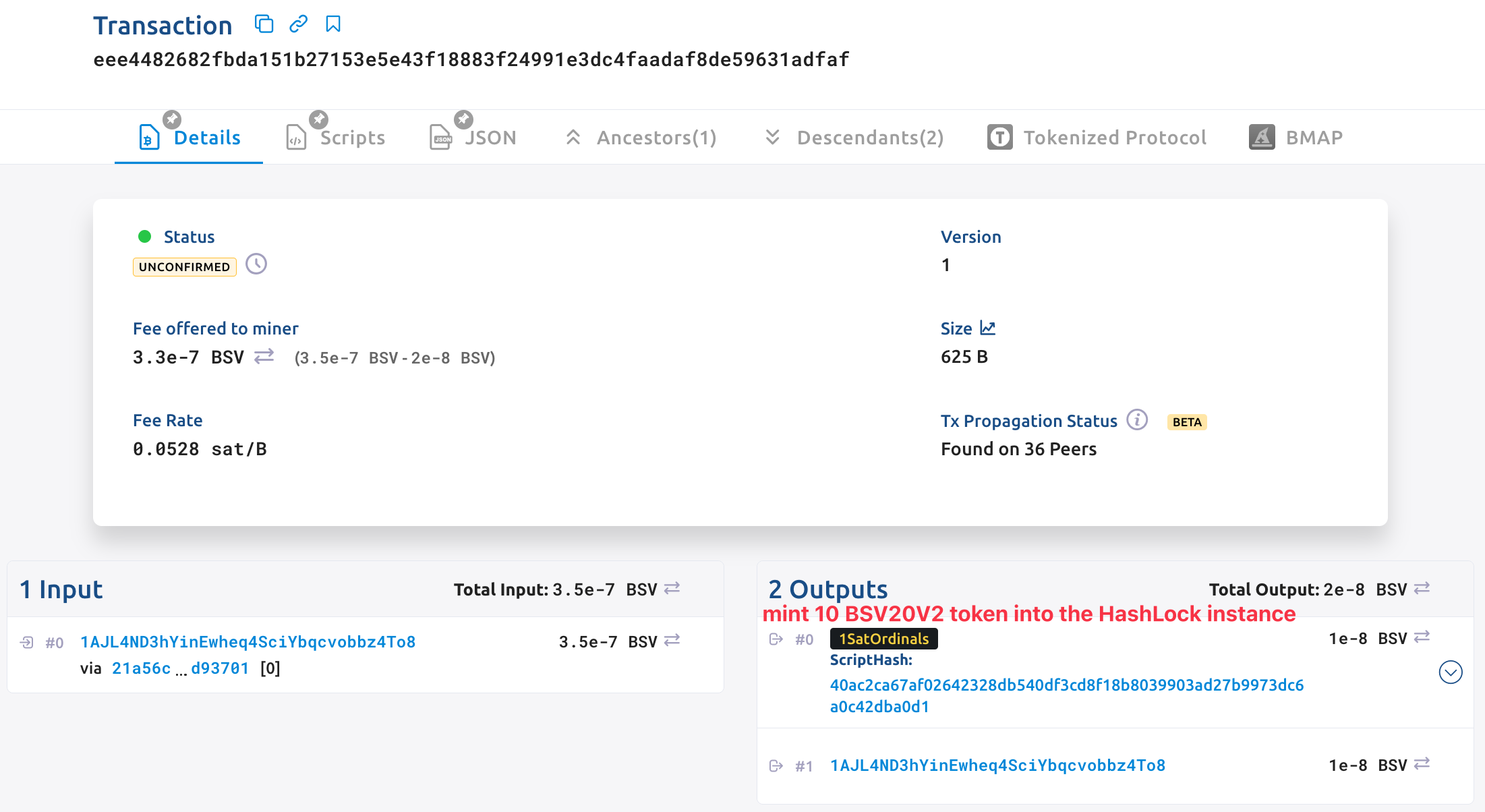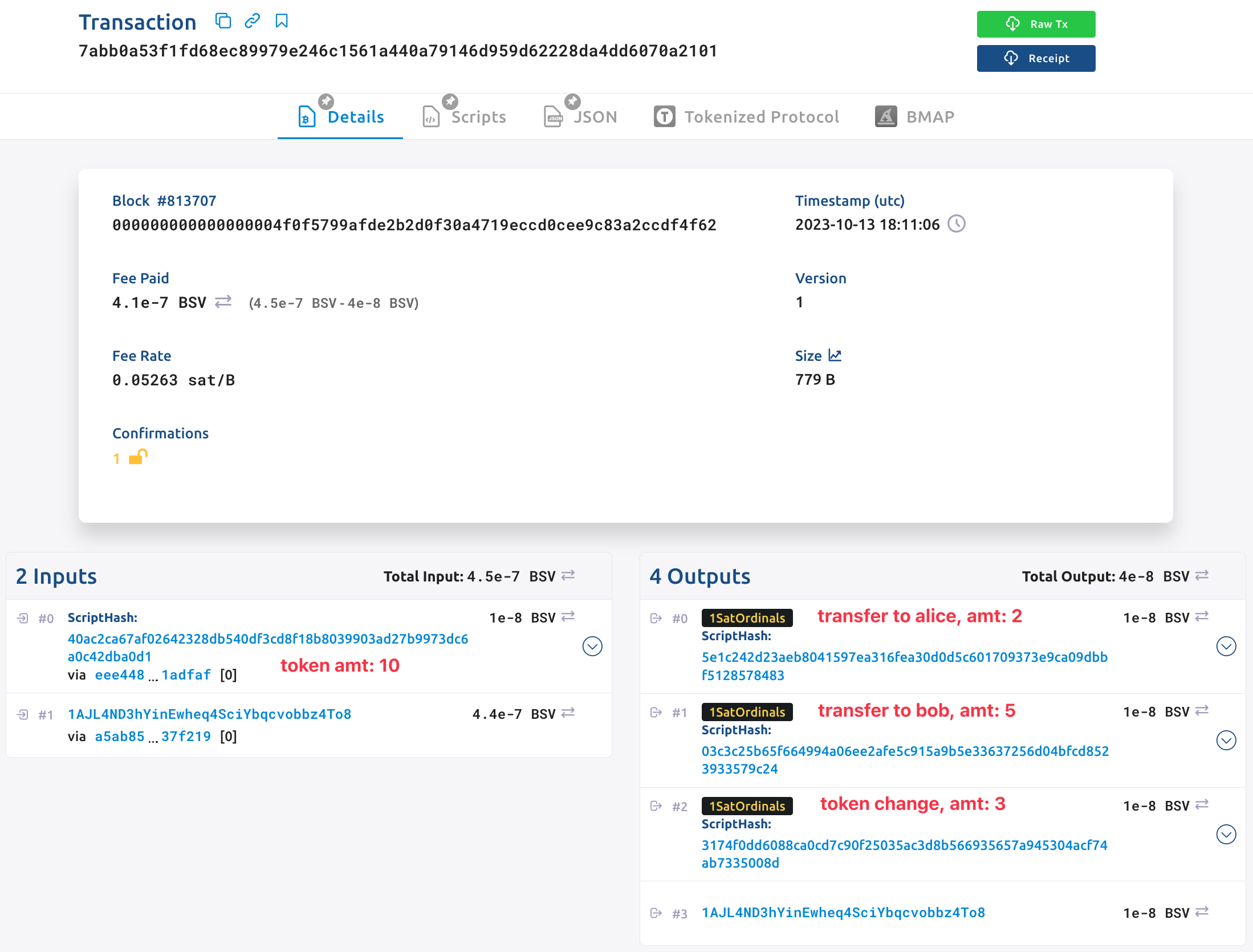Tutorial 2: Mint BSV21 Token
Overview
In this tutorial, we will use contract HashLock as an example, to introduce how to mint a BSV21 Token with sCrypt and transfer it with a Smart Contract.
To enable all these features, you should install scrypt-ord as an dependency in your project.
npm install scrypt-ord
Contract
The new contract HashLockFTV2 is almost the same as the previous implementation, except two differences.
- It must be derived from
BSV21instead ofSmartContract.
class HashLockFTV2 extends BSV21 {
...
}
- The constructor has extra parameters -
id,sym,max, anddec- representing BSV20 V2 fields.
constructor(id: ByteString, sym: ByteString, max: bigint, dec: bigint, hash: Sha256) {
super(id, sym, max, dec)
this.init(...arguments)
this.hash = hash
}
The contract also stores a hash value in the contract, and it will be unlocked successfully when calling the public method unlock with the correct message.
export class HashLockFTV2 extends BSV21 {
@prop()
hash: Sha256
...
@method()
public unlock(message: ByteString) {
assert(this.hash == sha256(message), 'hashes are not equal')
}
}
The base class BSV21 encapsulated helper functions to handle BSV20 V2 tokens. If you want to create your own contract that can interact with BSV20 V2 protocol, derive from it.
Deploy Token
We first create an instance of contract HashLockFTV2, then call function deployToken to deploy the new token.
// BSV20 V2 fields
const sym = toByteString('sCrypt', true)
const max = 10n
const dec = 0n
// create contract instance
const message = toByteString('Hello sCrypt', true)
const hash = sha256(message)
const hashLock = new HashLockFTV2(toByteString(''), sym, max, dec, hash)
...
// deploy the new BSV20V2 token
const tokenId = await hashLock.deployToken()
Normally, we use a P2PKH address to receive the token, then the token is controlled by a private key the same as the general P2PKH.
In this example, the token is mint to a contract instance, it is controlled by the smart contract, which means it can only be transferred when the hash lock is unlocked.
Transfer Token
For now, the contract instance holds the token and we try to transfer it to a P2PKH address.
Step 1. Create Receiver Instance
Class BSV20V2P2PKH represents a P2PKH address that can hold BSV21 tokens. Its constructor takes BSV20 V2 fields and an receiving address as parameters.
const alice = new BSV20V2P2PKH(toByteString(tokenId, true), sym, max, dec, addressAlice )
const bob = new BSV20V2P2PKH(toByteString(tokenId, true), sym, max, dec, addressBob)
Step 2. Call the Contract
Just as other contract calling methods we introduced before, we call the public method unlock of HashLockFTV2 as follows.
// Call the contract
const { tx: transferTx } = await hashLock.methods.unlock(message, {
transfer: [
{
instance: alice,
amt: 2n,
},
{
instance: bob,
amt: 5n,
},
],
} as OrdiMethodCallOptions<HashLockFTV2>)
This code will create a transaction that transfers 2 tokens to alice and 5 to bob.
The default transaction builder will automatically add a token change output on the transaction. In this example, it will automatically add a token change output with 3 tokens, paying to the default address of the instance connected signer. You can also specify the token change address by passing the value to the key tokenChangeAddress of struct OrdiMethodCallOptions.
Execute command npx ts-node tests/examples/mintBSV21.ts to run this example.

Then you can check your token transfer details on the explorer.


Conclusion
Great! You have finished the tutorial on how to mint and transfer the BSV20 V2 Token with a Smart Contract.
The full complete contract and example can be found in sCrypt's repository.